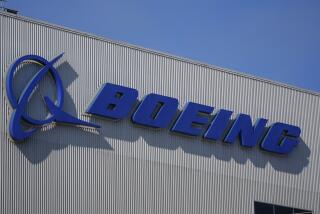Chrysler Cuts Incentives to GM, Ford Level : Strong Sales in June Lead to Leaner Rebates
- Share via
DETROIT — Chrysler Corp. on Tuesday matched the new, leaner incentive offerings of General Motors Corp. and Ford Motor Co. by trimming rebates on many models.
Chrysler, the smallest of the Big Three U.S. auto makers, has been running incentive campaigns that have no expiration dates. But two weeks ago it announced that its current campaign would expire Tuesday.
Industry analysts said at the time that Chrysler was signaling to its two rivals a willingness to reduce the size of rebates and was giving them a chance to introduce leaner incentives. Ford and GM subsequently did so.
“June was the best June in (sales) history. There’s a testing of the marketplace going on to see whether you can make a little more money” while sales are strong and inventories are low, said Ronald Glantz, analyst with Montgomery Securities Inc. in San Francisco.
Incentives Shrink
Industry car inventories were 13% lower at the end of June than a year ago, at a healthy 56-day supply, according to Ward’s Automotive Reports. A supply of 60 to 65 days is considered normal.
Rebates and heavily discounted loan financing rates are extremely costly for auto makers. But industry analysts and executives at all Big Three companies and many foreign makers have said they see little chance of ending the practice.
“Is the trimming a case of weaning the consumer from incentives? No way. It’s just an attempt to make more money while demand is strong,” Glantz said. “The only way to get rid of incentives is if all the companies did it at once, and Chrysler is clearly committed to incentives.”
Incentive offerings have shrunk substantially since 1986, when GM launched a round of rebates and low financing rates as a way of moving ponderous inventories. GM and other makers have since learned to match production more closely to sales, reducing inventories and the likelihood of year-end fire sales.
But the rebates and low loan rates continue.
Bennett Bidwell, Chrysler’s president for product and marketing, said recently that Chrysler probably will raise prices for 1989 models because incentives, especially on top of low prices such as the $6,995 Dodge Aries-Plymouth Reliant sticker, leave little profit.
Lower Pricing
Chrysler has kept its price increases well below those of GM and Ford during the past three years at the expense of profit margin to increase its share of the U.S. car and truck market.
Auto dealers are divided on rebates. While many demand them as a way of staying competitive with dealers whose makers offer them, some see incentives as a tool auto makers use to take bargaining power away from dealers.
Ronald Tonkin, first vice president of the National Auto Dealers Assn., travels around the country crusading for an end to incentives.
“My pleas next year to the manufacturers: You guys build the cars, price them fairly, and if you’ve got to incentivize anybody, incentivize us and let us use our entrepreneurial skills to sell them,” Tonkin said.
“The cars probably sold for what they were worth (with incentives),” he said, calling for lower initial pricing and cold-turkey withdrawal from incentives, with manufacturers and dealers enduring slower sales during the first half-year and steadier, more normal sales afterward.
Chrysler’s new incentive package, which has no expiration date, includes rebates ranging from $300 to $1,000--like Ford’s.
More to Read
Inside the business of entertainment
The Wide Shot brings you news, analysis and insights on everything from streaming wars to production — and what it all means for the future.
You may occasionally receive promotional content from the Los Angeles Times.










